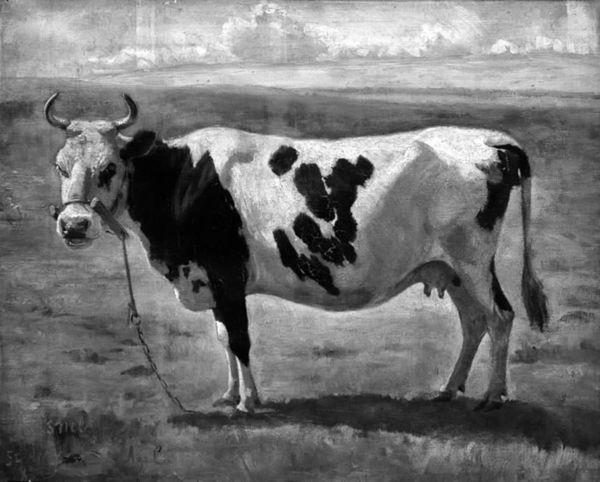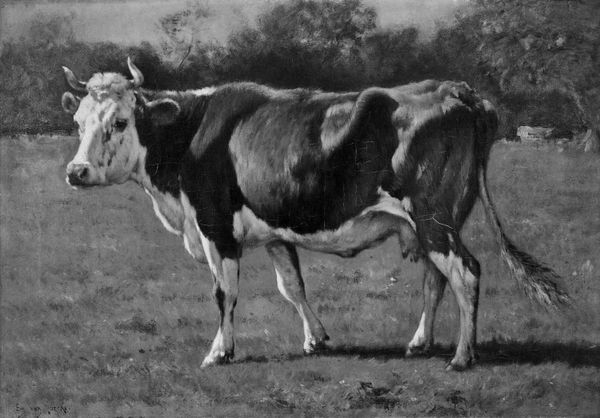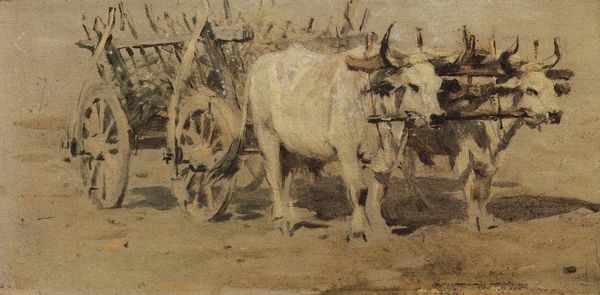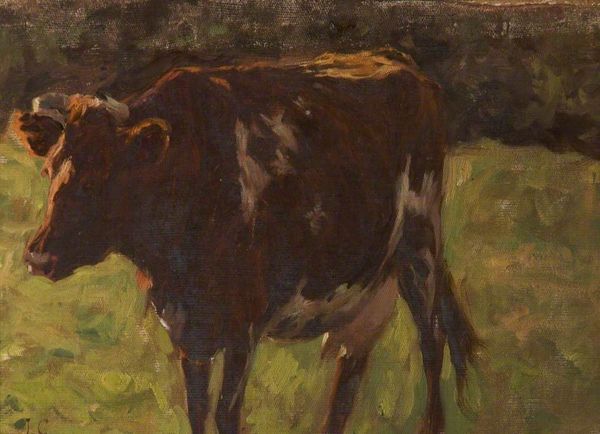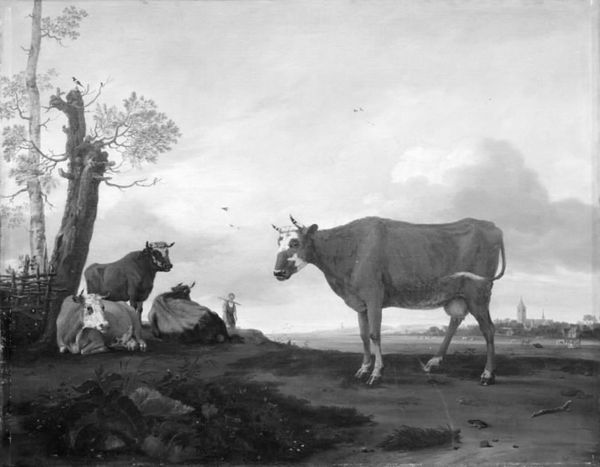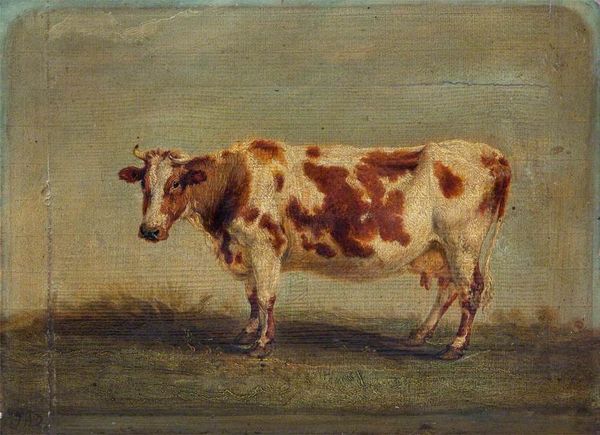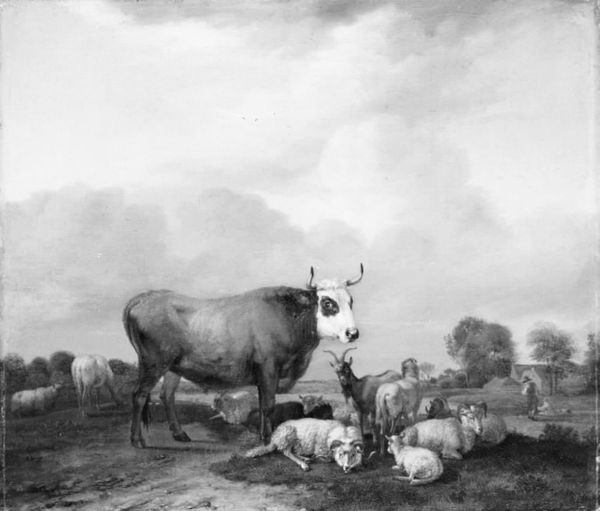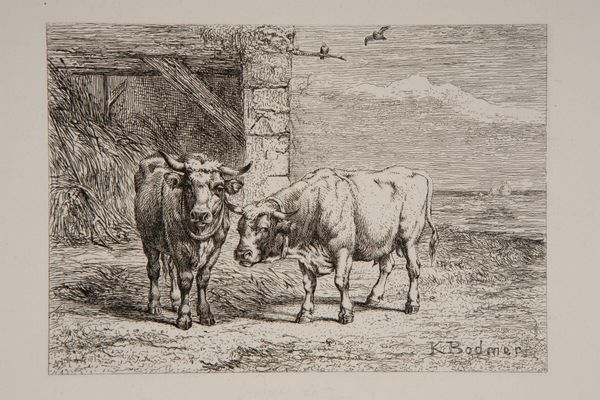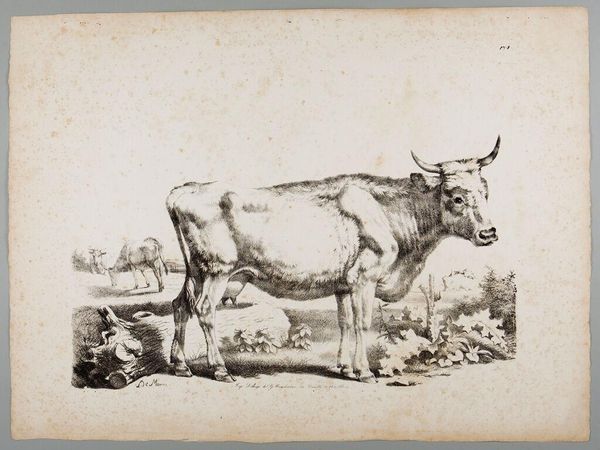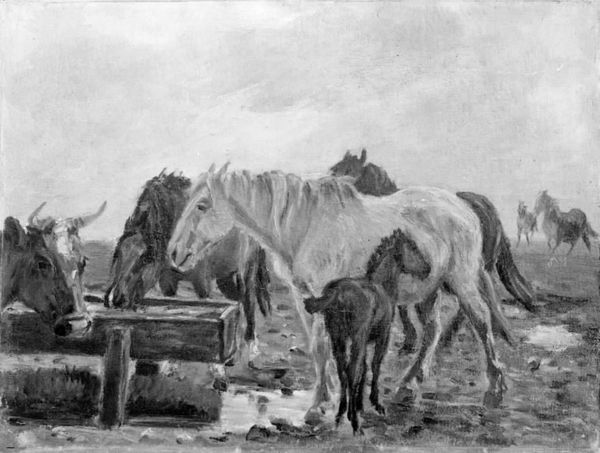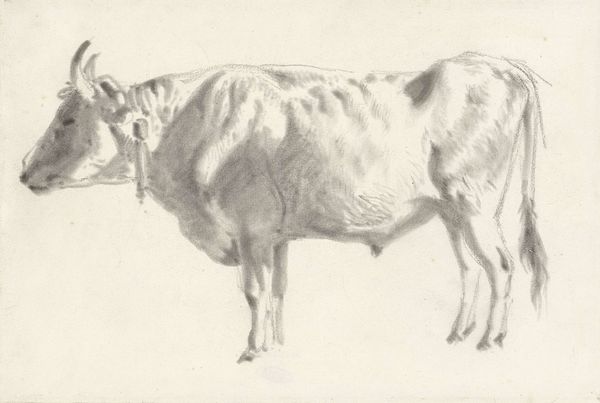
canvas
#
black and white photography
#
black and white format
#
charcoal drawing
#
possibly oil pastel
#
b w
#
charcoal art
#
canvas
#
black and white
#
surrealism
#
charcoal
#
graphite
Dimensions: 32.5 cm (height) x 40.5 cm (width) (Netto)
Curator: Welcome. We're looking at Theodor Philipsen’s “Standing Red-and-White Cow,” painted in 1872, which currently resides here at the SMK, the National Gallery of Denmark. Editor: The canvas practically hums with rural quiet, doesn't it? The cow itself is rendered with such groundedness. I’m curious about Philipsen's access to materials at this time. Curator: Indeed. Philipsen came from a relatively affluent background, which undoubtedly afforded him access to better quality canvases and pigments than many of his contemporaries. It's a telling insight into the artistic landscape of the period. The rise of plein air painting was facilitated not only by shifts in artistic thinking but also by developments in manufacturing of transportable materials and equipment for working on-site. Editor: It really makes you think about the means of artistic production. How the economic conditions shaped his art? It is hard to divorce this gentle farm scene from the wider social changes reshaping rural life, and how it all becomes transformed, and consumed, by the art market. The textures of paint suggest a tangible interaction with the land itself, the artist really being immersed in what he sees. Curator: Absolutely. Beyond his personal means, consider the burgeoning Danish art scene and the push for artistic representation of rural life, a move away from classicism toward portraying a specific, Danish reality, with attention toward naturalistic rendering of local breeds of cattle as signifiers of Danish identity and wealth. Editor: Looking at the canvas itself, the artist has worked hard to render light and shade so realistically that it feels almost three dimensional; the textures are beautifully replicated. Philipsen is certainly making an impression. It is also tempting to explore what breed this red-and-white cow is. Curator: It's all so deliberately situated in its time, a cultural moment where the national identity of Denmark was closely tied to its agrarian roots, particularly within artistic and political spheres. Editor: It’s almost possible to reach out and touch the coat of this striking ruminant! Considering the wider economy, that is quite impressive. Thank you. Curator: My pleasure. Thinking about "Staaende rdbroget ko," it highlights how socio-political history, cultural norms, and artistic endeavors all converge to create lasting, meaningful artwork.
Comments
No comments
Be the first to comment and join the conversation on the ultimate creative platform.
